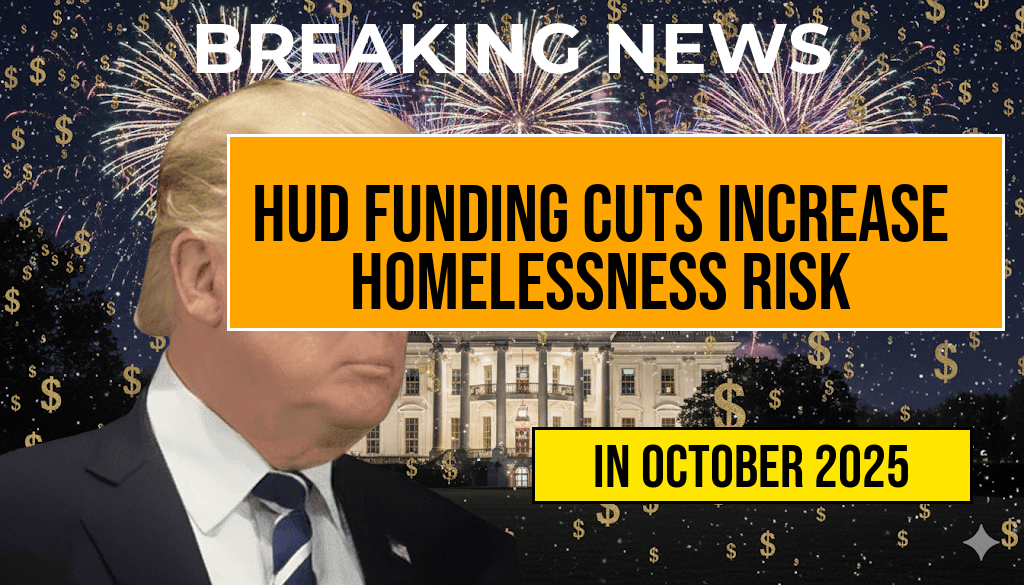Recent federal budget adjustments have sparked concern among homelessness advocates and local officials as the U.S. Department of Housing and Urban Development (HUD) has significantly reduced its annual funding allocation, dropping from $3.3 billion to just $1.1 billion for homelessness assistance programs. This dramatic cut threatens to leave over $170,000 vulnerable individuals and families without critical support services. With the new budget, many housing initiatives face suspension or scaling back, raising fears that the progress made in recent years to combat homelessness could rapidly unravel. As federal resources dwindle, municipalities and nonprofits are racing to fill the gap, but experts warn that this funding shortfall could exacerbate a growing crisis in numerous urban and rural communities across the country.
The Impact of Funding Reductions on Homelessness Assistance
Understanding the Budget Shift
The sharp decline in HUD funding reflects shifting federal priorities amid broader economic concerns and political debates over budget allocations. Historically, the department’s homelessness programs have been a cornerstone of national efforts to reduce homelessness, providing essential support such as emergency shelter, transitional housing, and permanent supportive housing. The new budget, however, signals a significant departure from previous commitments, with a reduction of approximately 67% from the previous year’s funding.
According to official documents, the $2.2 billion cut will impact programs administered through local agencies, which rely heavily on federal grants to operate shelters, outreach programs, and affordable housing initiatives. The homelessness crisis has already been worsening in many parts of the country, and this reduction is expected to deepen the challenges faced by vulnerable populations.
Who is Most Affected?
The immediate consequences are most visible among chronically homeless individuals, families experiencing housing insecurity, and those with special needs requiring ongoing support. Data suggests that the current funding levels would be insufficient to assist roughly 170,000 individuals—an estimate based on current program capacity and recent homelessness counts. Many of these individuals rely on emergency shelters, transitional programs, or permanent supportive housing funded through federal grants.
| Program Type | Previous Funding | New Funding | Number of People Supported |
|---|---|---|---|
| Emergency Shelter & Outreach | $1.5 billion | $500 million | Supports approximately 100,000 individuals |
| Transitional Housing | $700 million | $300 million | Supports roughly 40,000 individuals |
| Permanent Supportive Housing | $1.1 billion | $300 million | Supports around 30,000 individuals |
Local Responses and Challenges
Municipal and Nonprofit Strategies
In response to federal cuts, local governments and nonprofit organizations are scrambling to sustain existing services. Some have turned to private donors, state funds, and community-based initiatives to bridge the gap. For example, several cities have increased their affordable housing budgets and launched emergency relief programs, but these efforts often fall short of the scale needed to replace federal funding.
“Without adequate federal support, the burden shifts to local agencies that are already stretched thin,” said Dr. Lisa Carter, a housing policy expert at the Urban Institute. “This could lead to longer wait times for housing placements and reduced access to critical services for those in need.”
Emerging Risks and Concerns
- Increase in Unsheltered Homelessness: Without sufficient shelter capacity, more individuals may be forced onto the streets, amplifying health and safety risks.
- Growth of Housing Instability: Reduced transitional and supportive housing options could result in higher eviction rates and family instability.
- Strain on Healthcare and Emergency Services: Homeless populations often rely on emergency care, which could become overwhelmed as shelter options diminish.
Broader Implications and Policy Debates
Federal Priorities and Political Dynamics
The funding cut reflects broader political debates over the role of federal government in addressing social issues. Critics argue that reducing funding hampers efforts to eradicate homelessness, while proponents suggest reallocating resources to other priorities. However, experts warn that neglecting housing assistance can have long-term economic consequences, including increased healthcare costs, crime, and lost productivity.
Looking Ahead
Advocacy groups are calling for renewed federal investment, emphasizing that sustainable solutions require stable funding. They highlight that homelessness is a multifaceted issue needing comprehensive strategies—spanning affordable housing development, mental health services, and employment programs. As the situation unfolds, community leaders are urging policymakers to reconsider funding levels and prioritize vulnerable populations.
Additional information on homelessness and federal programs can be found through resources like the Wikipedia page on homelessness in the U.S. and reports from the Forbes coverage of social policy issues.
Frequently Asked Questions
What is the main reason for the increase in homelessness risk?
The risk of homelessness has escalated primarily due to the significant drop in HUD funding, which decreased from 3.3 billion to 1.1 billion dollars.
How does the reduction in HUD funding affect vulnerable populations?
The decrease in funding leaves approximately $170,000 vulnerable, meaning that many individuals and families in need may face increased difficulty accessing housing and support services.
What are the potential consequences of reduced funding for homeless services?
Reduced HUD funding can lead to fewer shelter options, limited resources for outreach, and decreased support programs, which may result in a rise in homelessness rates and prolonged housing instability.
Are there any specific groups most affected by this funding cut?
Vulnerable groups such as families, veterans, and individuals experiencing mental health or substance use issues are most at risk due to the decreased availability of targeted assistance and support services.
What can policymakers do to address the rising homelessness risk?
Policymakers can consider restoring or increasing HUD funding, implementing comprehensive affordable housing strategies, and expanding support programs to mitigate the impact of funding cuts and protect vulnerable populations.








